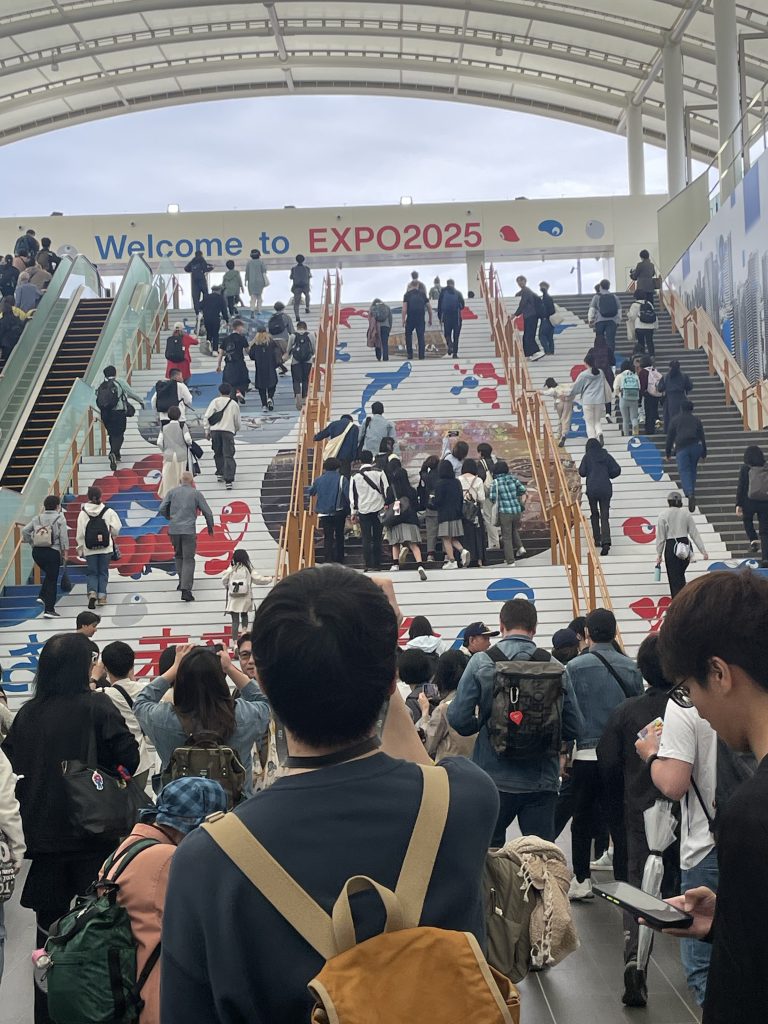
Image : personal photo
When is the world expo 2025 Osaka ?
The Expo 2025 Osaka, which opened on April 13, 2025, will run for six months until October 13. Its theme is “Designing Future Society for Our Lives,” and it brings together 160 countries and regions to showcase innovations for a sustainable and inclusive future.
What can you see at world expo 2025 ?


Expo 2025 or “Bampaku” (万博) is organized in five thematic zones : smart mobility, digital, art, green, and future life. Each zone invites visitors to explore the interconnections between technology, art, and sustainable development, offering immersive experiences and forward-thinking innovations.
How to get to world expo 2025 Osaka ?
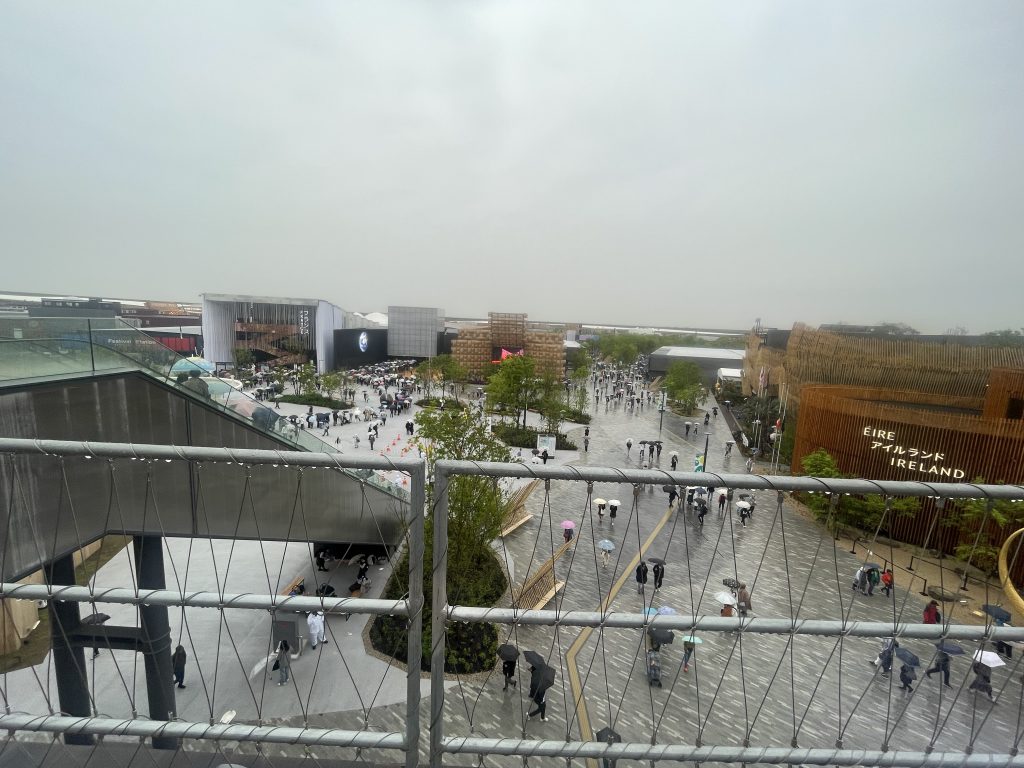
Image : personal photo
The Osaka Metro Chūō Line is the most direct way to reach the Expo. It stops at the newly built Yumeshima Station, located right in front of the East Gate.
Shuttle buses also connect the Expo to ten key locations around Osaka, including Shin-Osaka, Osaka, Namba, Tennoji, and Sakai stations. These services are convenient for visitors arriving by train or plane.
From Sakurajima Station (the terminus of the JR Yumesaki Line), frequent shuttles serve the West Gate. Between 8:00 and 11:00 a.m., passengers with advance reservations have boarding priority.
The Expo Liner is a direct train linking JR Osaka and Shin-Osaka stations to Sakurajima, making it easier for visitors coming from distant regions or airports. It is especially useful for those traveling by Shinkansen or domestic flights.
Direct car access to the island of Yumeshima is not allowed. Park-and-ride facilities are available in Maishima, Amagasaki, and Sakai. After parking, visitors can take shuttle buses to the Expo. These lots require advance reservation and payment.
For visitors with reduced mobility, an accessible parking area is available near the East Gate. This also requires a prior reservation.
Ticketing and reservation system
You must first create an ExpoID, link your tickets to it, and then reserve your entry date and time slot through the EXPO2025 Digital Ticket website.
Several signature pavilions and large interactive projects require advance reservation, either via lottery or by booking one of the remaining slots (available 4 to 3 days before your visit). Notable examples include null², Future of Life, Playground of Life: Jellyfish Pavilion, Earth Mart, and Dialogue Theater.
In contrast, Commons C pavilions (small modular stands) and some type A pavilions — such as the Nordic Pavilion — remain accessible without reservations.
For pavilions classified as “reservation required,” two rounds of lottery are held:
- Round 1: several weeks in advance (dates are published on the official website)
- Round 2: up to 7 days before your visit
At J–4 (4 days before your selected date), any unassigned slots are released for first-come, first-served booking, without a lottery.
From J–3 until 9:00 AM JST on the day before your visit, you can still grab available time slots directly via the reservation platform, also on a first-come, first-served basis.
After this point, access to non-reservation pavilions is available without booking — just by waiting in line.
The most mind-blowing innovations
Here’s a look at some of the most striking and talked-about innovations showcased at World expo 2025 Osaka:
The Grand Ring
The Grand Ring is the architectural emblem of Expo 2025 Osaka, embodying the theme “Unity in Diversity.” Designed by Sou Fujimoto, it is the largest wooden structure in the world, covering 61,035 m², built without nails or screws using traditional carpentry techniques. Its 2,025-meter-long skywalk, featuring five escalators and six elevators, offers a circular promenade 20 meters above ground, symbolizing unity and interconnectedness.

Image : personal photo
The null² Pavilion
The null² pavilion, created by artist Yoichi Ochiai, uses a robotic reflective membrane that deforms in real time, creating a “living mirror” where surrounding landscapes transform before visitors’ eyes. Inside, interactive 3D avatars generate a hybrid experience between reality and virtuality, marking a major advancement in immersive digital art.
The Mini Beating Heart
Cultivated from stem cells and presented in an international pavilion, it illustrates the rapid progress in regenerative medicine.
An Experimental Plasmid
Plasmids are very promising for the future of regenerative medicine. It shows how biomaterials can serve as a foundation for safer and personalized grafts.
Robots, AI, and Flying Vehicles
Japan unveiled 16 ultra-realistic robots equipped with AI for home and medical assistance, from nurse robots to ambulance drones. Prototype flying cars capable of vertical takeoff and landing performed flight demonstrations over the site, attracting strong media interest.
The Mega-Sushi Conveyor
Over 200 meters long, it transports plates of sushi at high speed around a futuristic food court, combining spectacle and dining.
“Dragon Meat”
Lab-grown beef with smoky flavors — made a sensation by offering a sustainable alternative to traditional farming.
Japanese pavilion
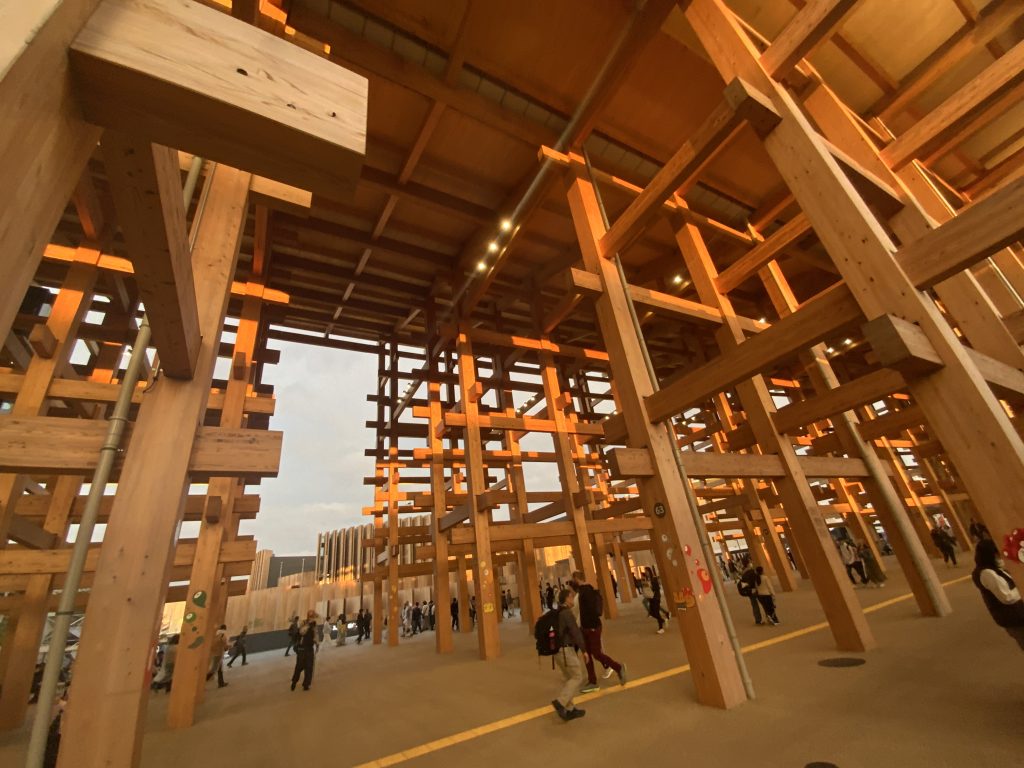
Image: personal photo
A keyword: JUNKAN (“循環”, circulation/cycle of life). The Japanese Pavilion illustrates the “Between Lives” cycle through a circular, reusable wooden structure, an on-site biogas system, and an immersive scenography divided into three zones that visitors explore in a loop.
The central theme, “Between Lives,” explores continuity and transformation: a plant grows, becomes furniture, decomposes, and returns to the soil, illustrating the perpetual cycle of life.
The pavilion adopts a circular form composed of hundreds of cross-laminated wooden planks arranged in concentric and staggered rings to evoke an architectural “forest.” Each panel (up to 3 m × 12 m) is screwed together without glue or adhesive, allowing it to be disassembled and reused after the Expo
Visitors enter and exit through three distinct access points, each offering a different narrative journey around the concept of circulation. A biogas installation converts the Expo’s organic waste into energy, making the pavilion “alive” and self-sufficient: visitors can directly observe the decomposition and electricity production process.
International pavilion
Unlike national pavilions, the International Pavilion brings together around ten international organizations in a shared space. Each organization has its own interactive area. The pavilion’s goal is to showcase the missions and projects of these organizations aimed at achieving the Sustainable Development Goals (SDGs) and to promote global cooperation through exhibitions, conferences, and workshops.
Organizations featured include ASEAN, the Red Cross, the International Center for Science and Technology, the United Nations, and others.
Here is an overview of the main innovations presented at the International Pavilion of Expo 2025 Osaka:
“The Solar Hub” (International Solar Alliance)
An interactive space dedicated to demonstrations of decentralized solar solutions: photovoltaic microgrids for rural areas, portable solar cookers, and solar-powered water pumps, aiming to improve energy access worldwide.
International Thermonuclear Experimental Reactor (ITER)
A 1:2 scale model of its future fusion reactor, accompanied by an augmented reality simulation of plasma confinement, explaining the principle of fusion as a clean and nearly inexhaustible energy source.
12 Innovative Projects
The ISTC (International Science and Technology Center) pavilion highlights 12 innovative projects divided into four major categories: civil security (detection of malicious drones), health (rapid development platforms for mRNA vaccines), clean energy (low-cost hydrogen storage), and disaster risk management (flood warning systems).
Multimedia Exhibitions by the UN
The United Nations Pavilion, under the theme “United for a Better Future,” presents multimedia exhibitions from 35 UN entities and 15 departments, including an SDG Photo Gallery and an immersive VR experience on climate change adaptation.
How much time should you allow for your visit?
One day is enough for a “speed run” (6–8 hours) to get a quick overview.
Two days (2 × 4–6 hours) are ideal to see the essentials without getting tired.
Three days or more are recommended only for enthusiasts or those curious about all the pavilions.
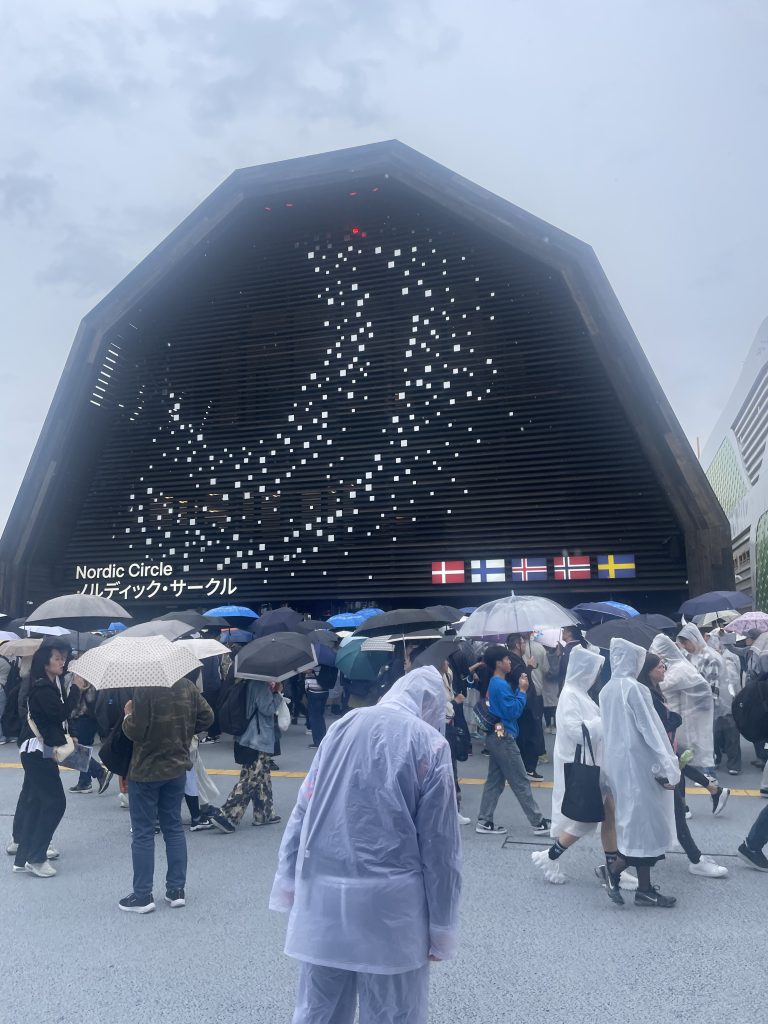
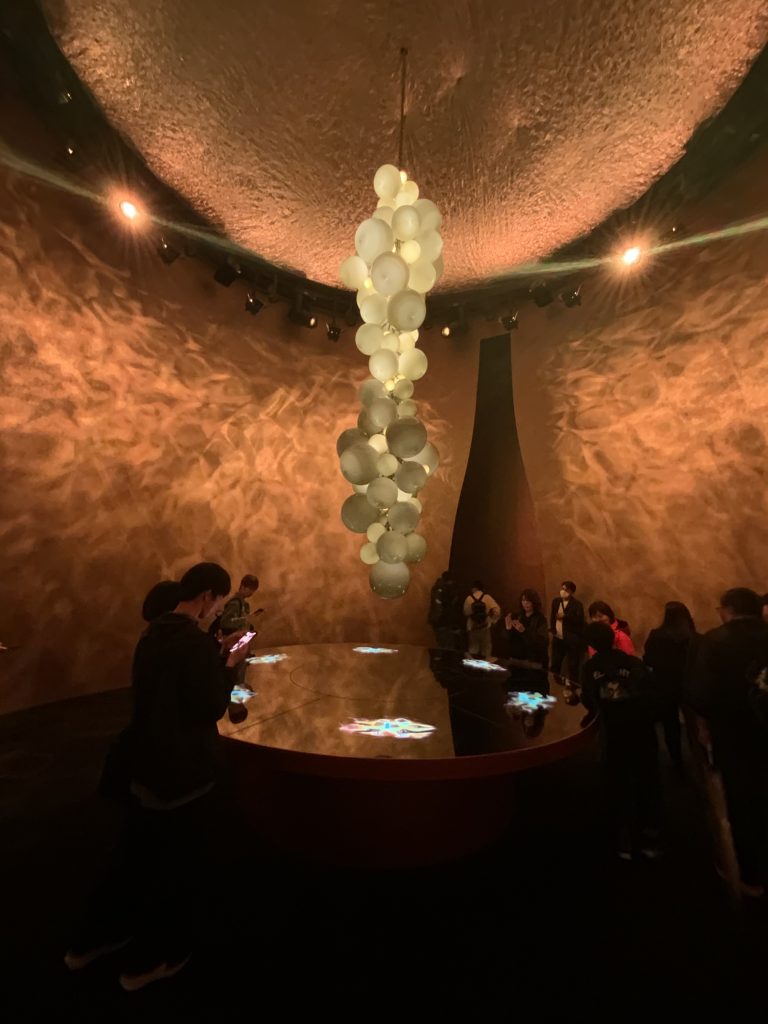


Tips to organize and enjoy your visit:
🎟️ Reservations & Tickets
- Participate in lottery draws 2 months and 7 days before your visit for pavilions requiring reservations
- Be quick at D-4 and D-3 to grab remaining spots on a “first come, first served” basis and avoid queues
🏨 Accommodation & Transport
- Stay ideally in Honmachi, Umeda, or Namba neighborhoods, which require only one transfer to the Chūō Line leading directly to Yumeshima.
- Use the Osaka Metro Chūō Line to avoid shuttle bus traffic jams, especially during peak hours (8–9 AM and 5–6 PM).
🗓️ On-Site Organization
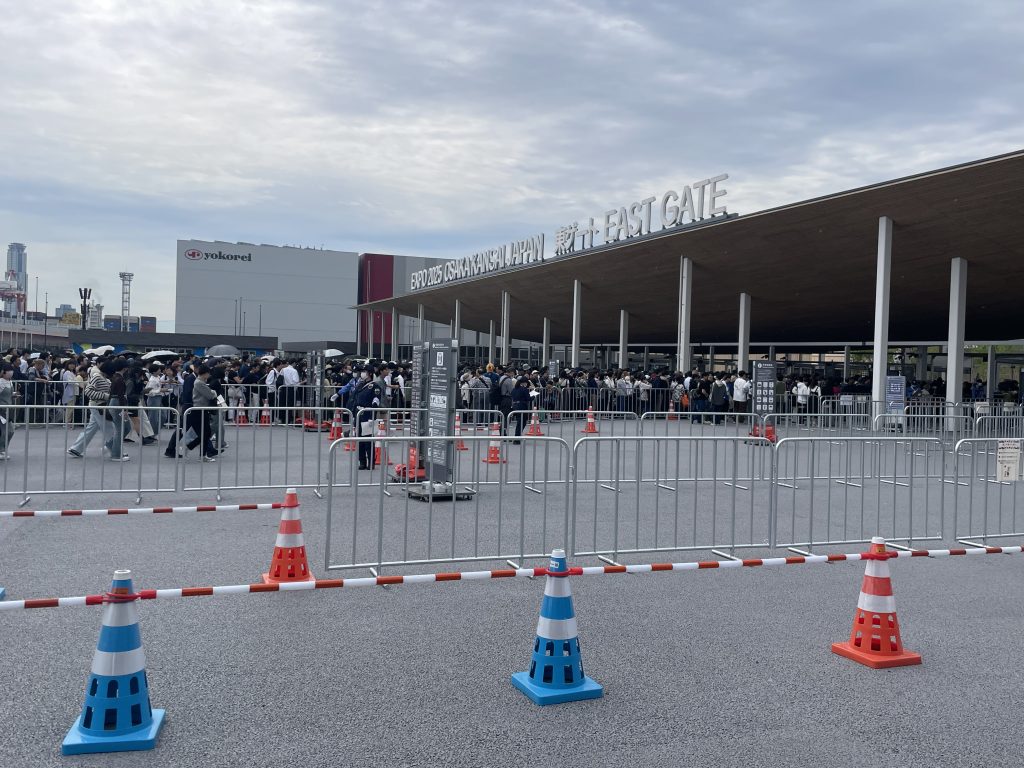
Image : personal photo
- Enter preferably via the West Gate, which is less crowded and reduces security check time to about 10 minutes versus 20–30 minutes at the East Gate.
- Spread your visit over at least two days to see the essentials without rushing.
- Target high-traffic pavilions in the morning or late afternoon.
- For popular spots during peak hours (11 AM to 3 PM), make a reservation in advance
☀️ Weather & Comfort

Image : personal photo
- From June to October, bring hats, sunscreen, and water bottles.
- There are 200 free water refill points on site.
- Carry a compact raincoat (k-way) since sudden showers are common during the rainy season. (mid-june to mid-july)
- Take advantage of air-conditioned areas (indoor pavilions, shaded zones under the Grand Ring) to rest and cool down.
🍽️ Food & Breaks
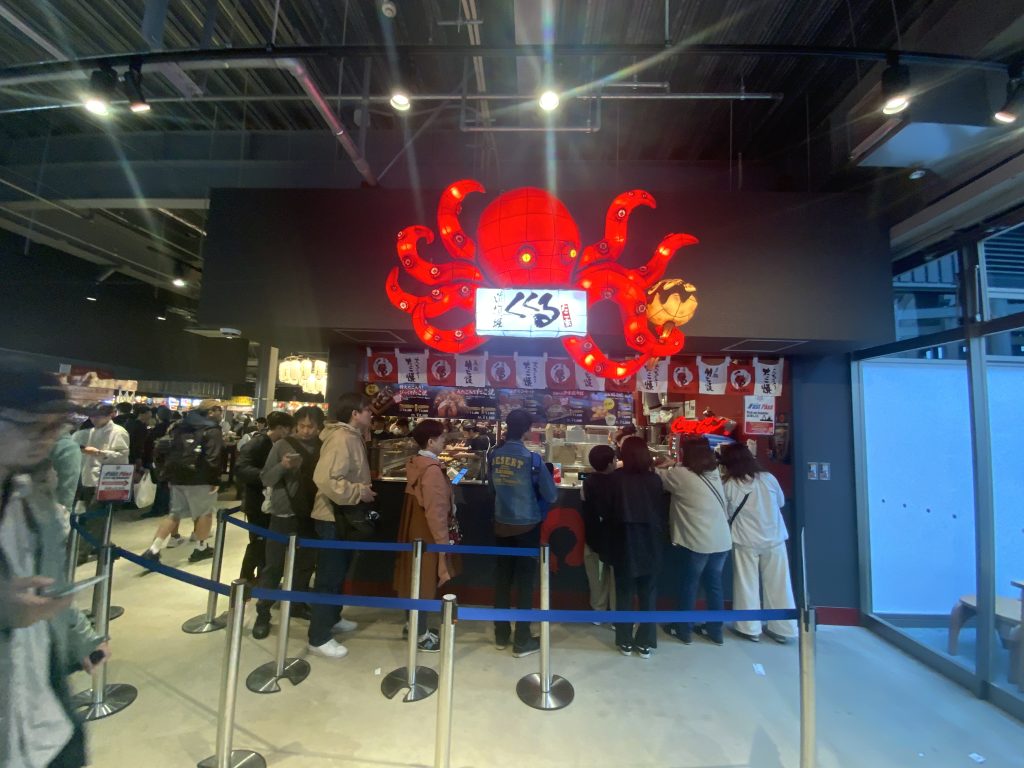
Image : personal photo
- Avoid lunch breaks between 12 PM and 2 PM, as it’s the busiest time. Instead, eat around 11 AM or after 2 PM to find tables more easily.
- Take advantage of the konbinis on site to enjoy affordable meals.
📱 Digital Tools
- Download the official Expo 2025 app for real-time site maps, event schedules, and last-minute openings.
- Enable push notifications to receive alerts about free time slots.
Enjoy your visit!

Image : personal photo
